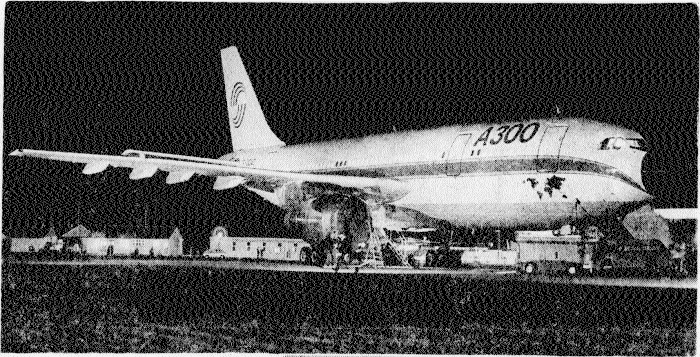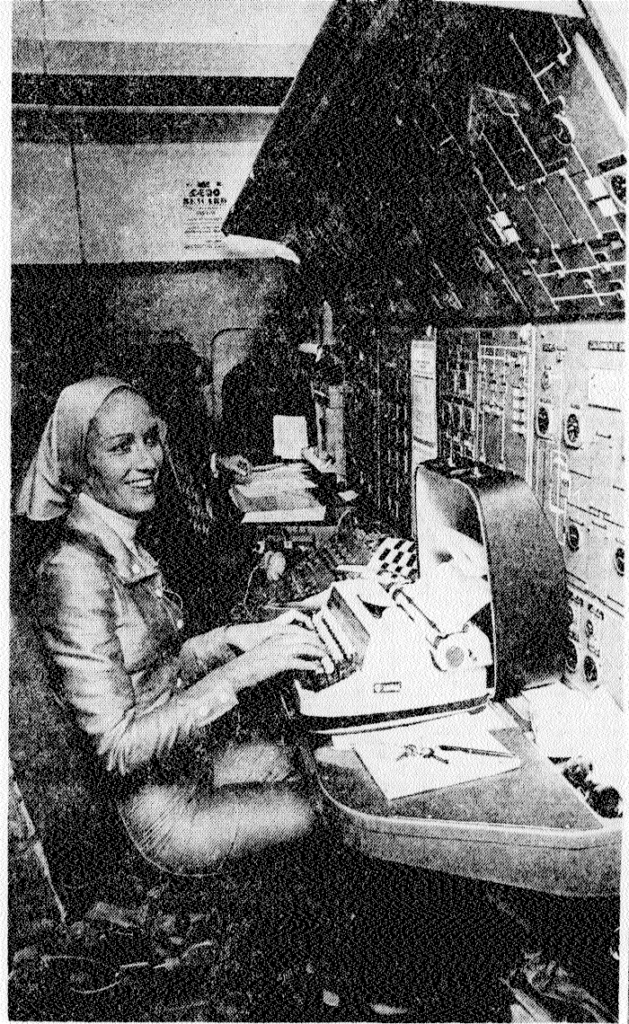Post by Dave Homewood on Dec 19, 2023 14:33:22 GMT 12
The first ever Airbus to visit New Zealand. From the Press, 24 May 1974.
EUROPEAN AIRBUS ON TOUR
The European Airbus, the earliest contender — and perhaps the most likely to succeed — as the replacement aircraft for N.A.C.’s Boeing 737s, touched down at Christchurch Airport early last night after a flight from Auckland.
In spite of the darkness about 100 people were outside the Canterbury Aero Club rooms to see the $12m orange and white, twin-engined, wide-bodied jet. The aircraft, which will make a courtesy flight over Christchurch today, is the pre-production model, which is on a 46-day tour of 22 cities in 15 countries.
Yesterday an Airbus entered service for the first time between London and Paris.
According to the managing director of the international production group behind the Airbus (Mr R. Beteille), the reception by potential customers in Australia and New Zealand has been better than expected. “This trip has altogether been most successful. We have completed all we set out to do in creating an interest in the plane, and people generally have been surprised to learn just how good the Airbus is.”
SELLING POINTS
He said that selling points in New Zealand were that the Airbus seated at least 250 passengers, could carry a 15-ton cargo payload in 20 standard containers — the only twin-engined jet to do so — was far less noisy than most other jets except the DC10 and the B.A.C. 1-11, used less fuel than any other large plane, and required a shorter runway than any other aircraft of comparable size.
Mr Beteille said that 46 orders for the Airbus had been confirmed. In the next 10 years, according to his organisation’s estimates, there would be a market capability in Australia and New Zealand for between 25 and 30 of the aircraft.
The Airbus production group, which spans five European countries, believes that on N.A.C.’s estimated growth pattern the airline could introduce the Airbus about 1978-79 as an immediate replacement for the 737. The viewpoint of N.A.C. is that it might require an interim aircraft such as a Boeing 727. Mr Beteille counters this by saying he believes the purchase of an interim aircraft will be a waste of money.
The size of the new plane, the result of a five-year development programme, which began in 1969, is impressive. It is almost as big as the Air New Zealand DC10, and is powered by the same type of engine.
SHORT HAULS
It has a wing span of 147 ft, a height of 52ft 2in, an overall length of 175 ft 11ins, and a seating capacity which ranges from 250 to 300. The Airbus is the first wide-bodied aircraft developed specifically for short and medium-haul routes, and at a time of increased cargo business its wide fuselage provides airlines with the bonus of large underfloor cargo capacity.
On board the Airbus are about 40 management, technical, and sales representatives and a small group of hostesses — one from each of the countries involved in the aircraft’s manufacture: France, Germany, Spain, Holland, and Britain.
On the flight to Christchurch yesterday the pilot was an N.A.C. captain. Visitors were able to see the various seating configurations which can be used. In what is normally the first-class area a large master console is monitoring the systems and performance of the Airbus during the seven weeks it is on tour.
Today the aircraft will be studied by N.A.C. engineers and technicians from its technical headquarters at the airport. The public will be able to photograph the Airbus, but will not be allowed on board it. It will leave for Auckland about mid-afternoon.
The pictures show the aircraft after its arrival in Christchurch last evening, and Miss Ines Daman, of Germany, at the monitoring panels.


EUROPEAN AIRBUS ON TOUR
The European Airbus, the earliest contender — and perhaps the most likely to succeed — as the replacement aircraft for N.A.C.’s Boeing 737s, touched down at Christchurch Airport early last night after a flight from Auckland.
In spite of the darkness about 100 people were outside the Canterbury Aero Club rooms to see the $12m orange and white, twin-engined, wide-bodied jet. The aircraft, which will make a courtesy flight over Christchurch today, is the pre-production model, which is on a 46-day tour of 22 cities in 15 countries.
Yesterday an Airbus entered service for the first time between London and Paris.
According to the managing director of the international production group behind the Airbus (Mr R. Beteille), the reception by potential customers in Australia and New Zealand has been better than expected. “This trip has altogether been most successful. We have completed all we set out to do in creating an interest in the plane, and people generally have been surprised to learn just how good the Airbus is.”
SELLING POINTS
He said that selling points in New Zealand were that the Airbus seated at least 250 passengers, could carry a 15-ton cargo payload in 20 standard containers — the only twin-engined jet to do so — was far less noisy than most other jets except the DC10 and the B.A.C. 1-11, used less fuel than any other large plane, and required a shorter runway than any other aircraft of comparable size.
Mr Beteille said that 46 orders for the Airbus had been confirmed. In the next 10 years, according to his organisation’s estimates, there would be a market capability in Australia and New Zealand for between 25 and 30 of the aircraft.
The Airbus production group, which spans five European countries, believes that on N.A.C.’s estimated growth pattern the airline could introduce the Airbus about 1978-79 as an immediate replacement for the 737. The viewpoint of N.A.C. is that it might require an interim aircraft such as a Boeing 727. Mr Beteille counters this by saying he believes the purchase of an interim aircraft will be a waste of money.
The size of the new plane, the result of a five-year development programme, which began in 1969, is impressive. It is almost as big as the Air New Zealand DC10, and is powered by the same type of engine.
SHORT HAULS
It has a wing span of 147 ft, a height of 52ft 2in, an overall length of 175 ft 11ins, and a seating capacity which ranges from 250 to 300. The Airbus is the first wide-bodied aircraft developed specifically for short and medium-haul routes, and at a time of increased cargo business its wide fuselage provides airlines with the bonus of large underfloor cargo capacity.
On board the Airbus are about 40 management, technical, and sales representatives and a small group of hostesses — one from each of the countries involved in the aircraft’s manufacture: France, Germany, Spain, Holland, and Britain.
On the flight to Christchurch yesterday the pilot was an N.A.C. captain. Visitors were able to see the various seating configurations which can be used. In what is normally the first-class area a large master console is monitoring the systems and performance of the Airbus during the seven weeks it is on tour.
Today the aircraft will be studied by N.A.C. engineers and technicians from its technical headquarters at the airport. The public will be able to photograph the Airbus, but will not be allowed on board it. It will leave for Auckland about mid-afternoon.
The pictures show the aircraft after its arrival in Christchurch last evening, and Miss Ines Daman, of Germany, at the monitoring panels.







